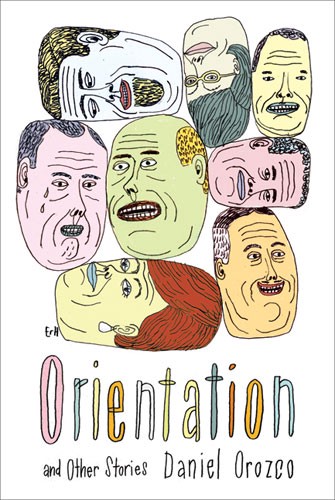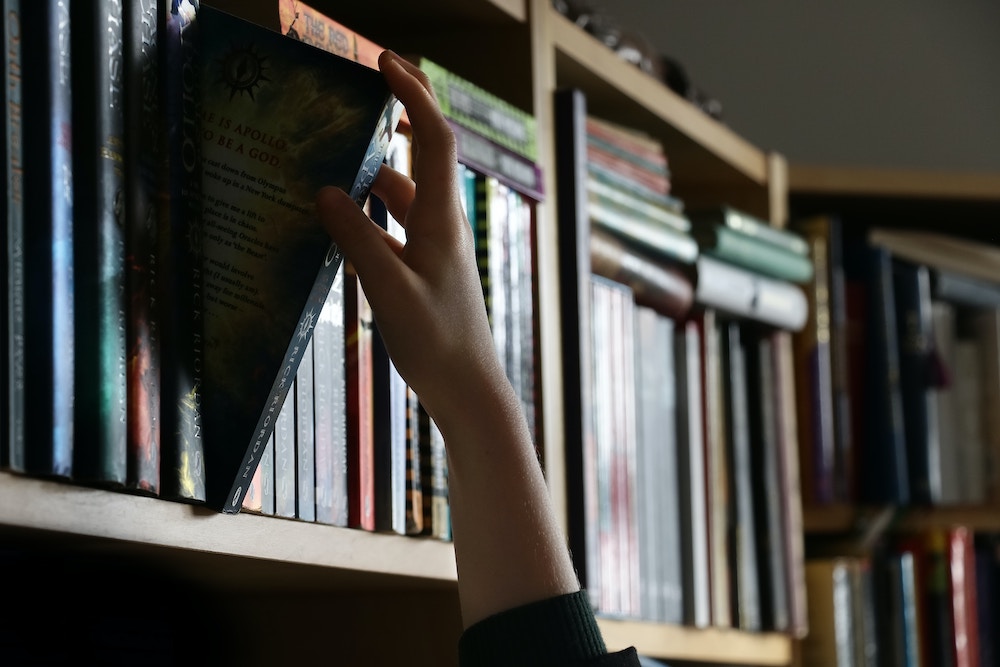news
Getting a Book into the Main Branch

1. VIP pass: And then there is the strangeness of presenting our capacity to make history in superheroic language. 2. Kenny Mikey, storyologist. 3. The staircases in the stacks were ornate. After I took this shot, I was hurried along.
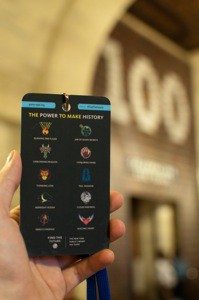
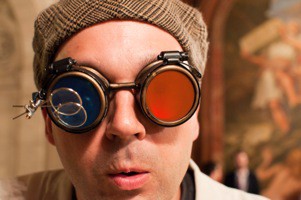

I spent Friday night at the New York Public Library’s main branch with 499 other people (plus an uncounted slew of librarians, volunteers, security guards, and caterers) to take part in Find the Future, a game of sorts that was thrown to celebrate the library’s hundredth birthday. The point of it was to collectively make history by writing a book, which, we were told, was the first of its kind — there were a lot of things being celebrated for being firsts all night. But the book is going to be housed in the stacks at Bryant Park for as long as New York City is standing. (Barring the zombie apocalypse, the city will be standing a good long time, which means you’ll be able to go to the library and look me up for a good long while too. Color me pink, and color everyone else there the same: getting our names in the catalog seemed to be a major draw.)
1. While all the talk throughout the night was about how we 500 contestants were making a grand effort to finish the game, people like Williams had to put up with us all night. 2. It’s probably a last resort to use a fire hose in a library. 3. As Parmagianino did it, though without the bigger hand.

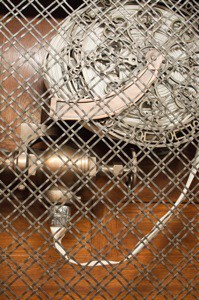

Before we were sat in the main reading room and told about the “epic and massive” collection the library held, and how we would have to “rise to the occasion” and do some “extreme-style collaboration” in order to win the game, we contestants had to sign a waiver so that we could not sue the library if we slipped and injured ourselves during the night (it was, the form said, going to be an evening with a lot of walking). The waiver also informed us that anything we write “in connection” with the game (including, presumably, pieces like this one) can be used by the library in promotional materials, etc., free of charge. I signed: the NYPL is a public good, and, well, it’s doubtful a Night at the Museum spinoff is going to make me millions anyway.
And, I wanted to take photos of the stacks. We, as a part of the game, were going to be lead through them on a tour, and we could take pictures. Since there were 500 of us, though, we weren’t allowed to dawdle: I was trailing behind my 15-person tour grouplet when I was asked to move along. “We’ve got to get 500 people through here tonight,” a woman — a librarian, I am highly suspicious — told me. So much for patience, eh?
1. Normally you can’t photograph this thingy, or any of the other thingies that are under glass.

Other than the stack tour, there was the game itself. The premise was: throughout the library there were 100 artifacts — things like a mural of a medieval scribe, Kerouac’s harmonica, or Malcolm X’s briefcase — that were supposed to have “powers” we could absorb by using our cellphones. At least, we, if we had an iPhone or late model Android phone, could snap a photo of a QR code hidden somewhere nearby, and watch a bar gradually fill the screen. Then, when we pressed and held a button, our phones would vibrate as we sucked the power outta the artifact — and into different categories of history-making superpowers. People with Palm phones apparently lacked the mettle to draw awesomeness from past totems and leverage it to fashion the future.
Once players had absorbed the powers of each artifact, they were supposed to write about how they found each one; a recounting of a heroic quest, in theory. In practice, each of the artifacts was assigned a prompt, and once absorbed, allowed people to log into the Find the Future website and type a response. These responses, collected and bound through-out the night by a real-deal, current-day, super-cool and sort-of-surly book artist, were the book. And it should be there, in the library, within a week or so, ready for anyone to come in, request, and flip through. Dog ear my pages when you look: obvs they’re the best.
Of course there’s something curious about this whole thing: 500 people spend the night in the library, cursorily moving around history’s detritus — presented with all the context a 200-word description can give. Is this sort of dragonfly skipping over the surface of the library’s collection really a way to find insight into the future? Is painting creatively by number the way our deified forebears made history? Who knows! I can’t really complain: I wondered around the library in a predawn, chemically stimulated haze shooting photos and writing things I can’t remember. And I got my name in the catalog.
–Jake Davis likes cats.





